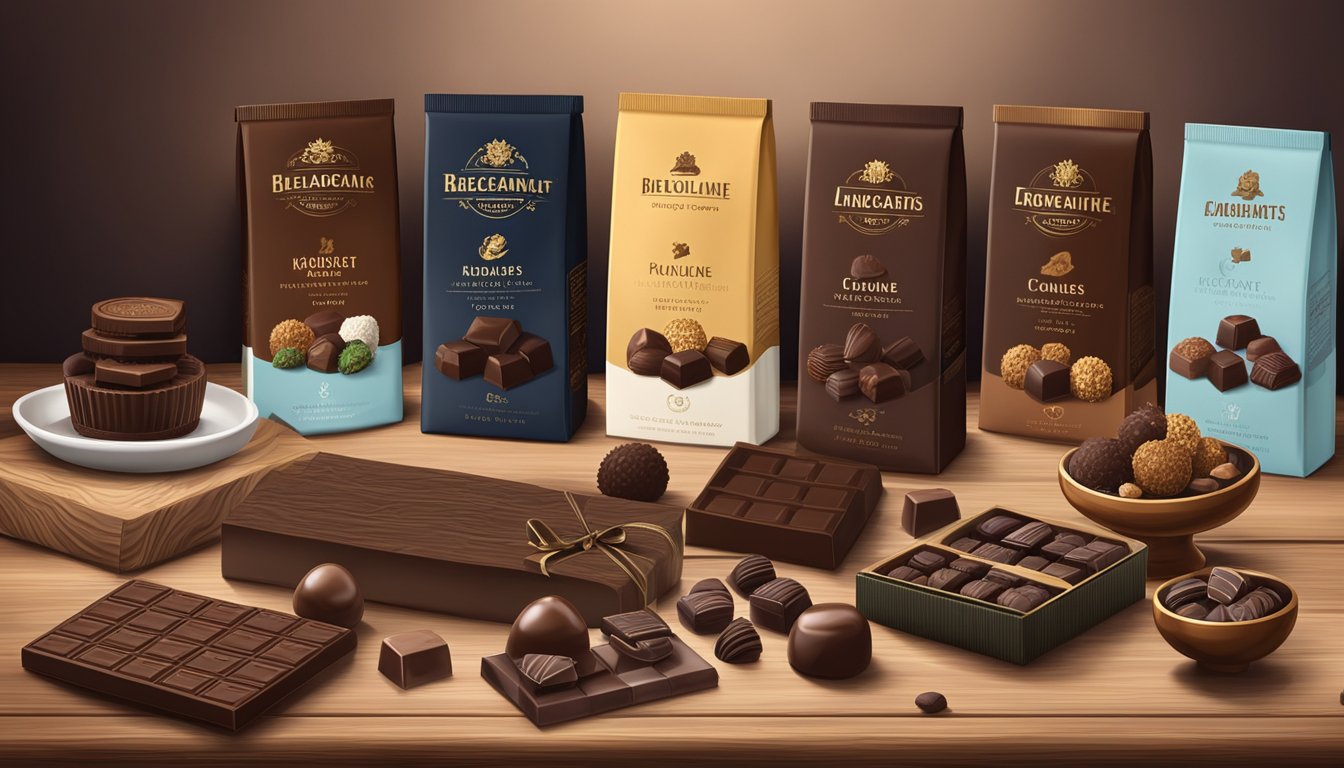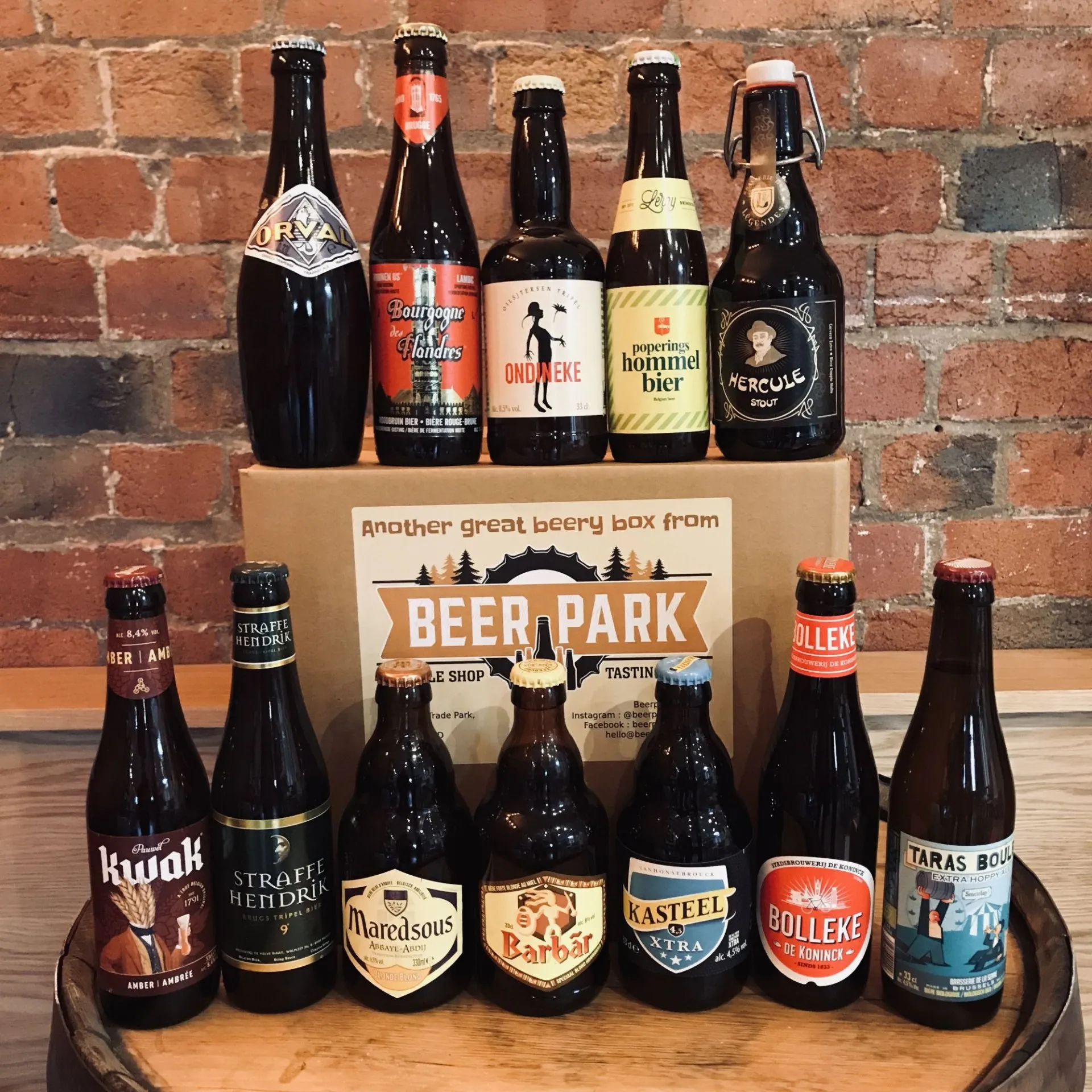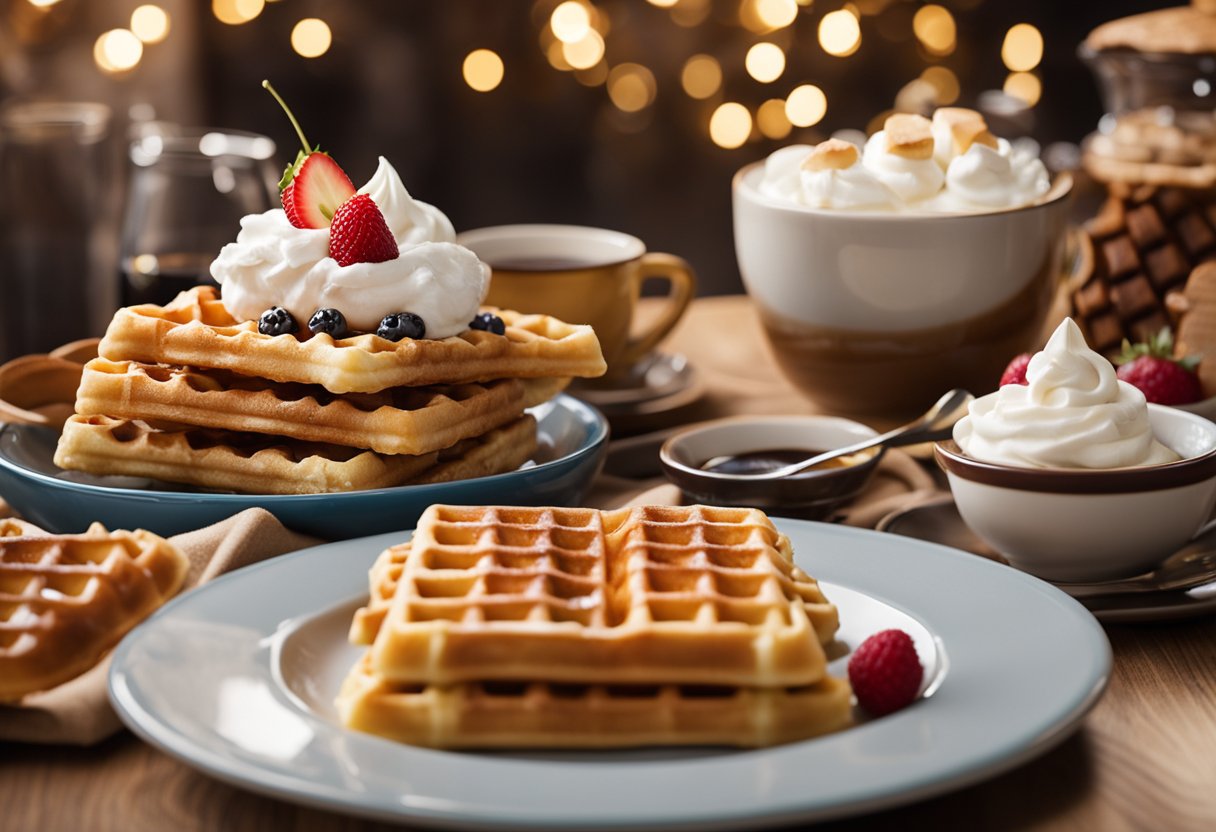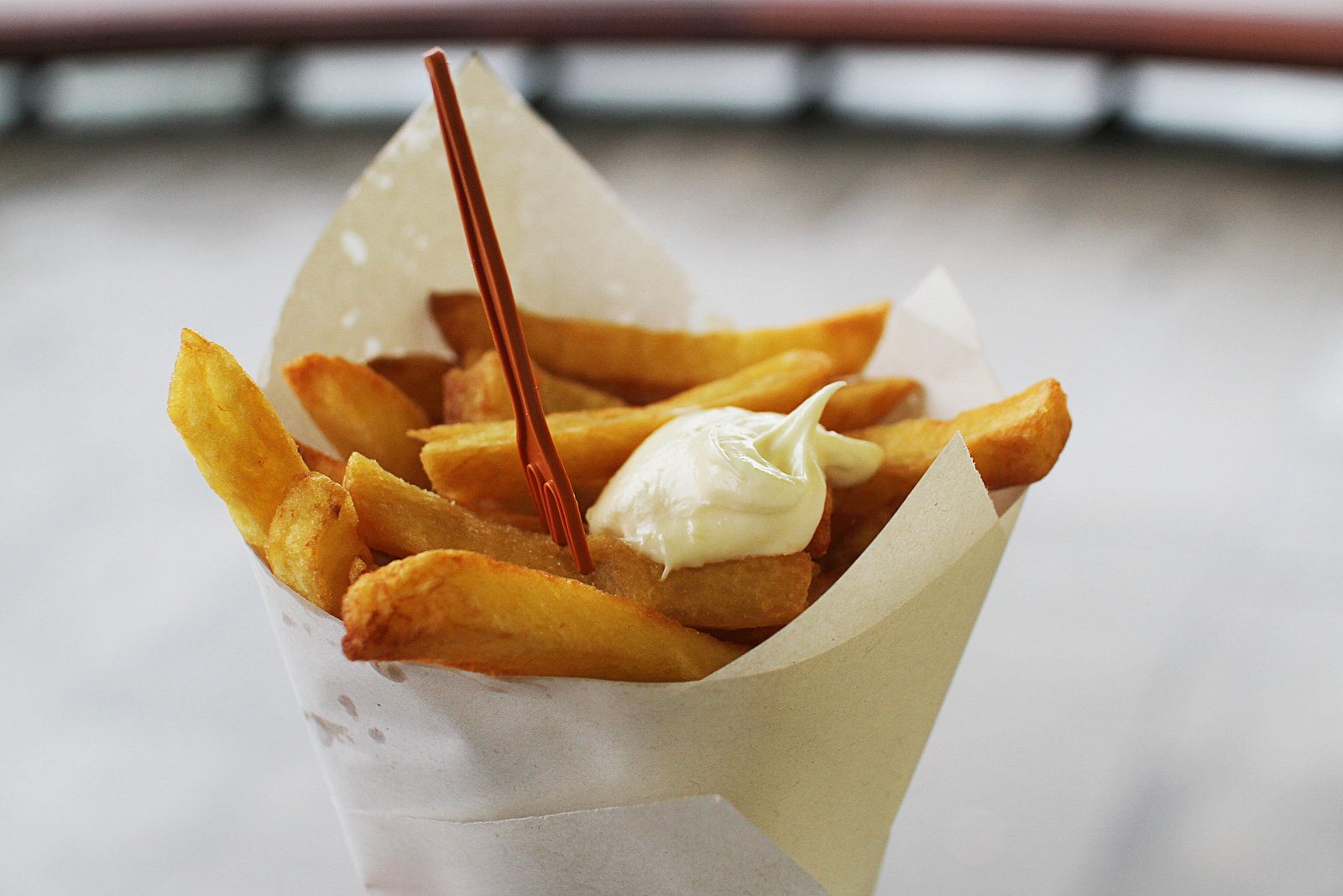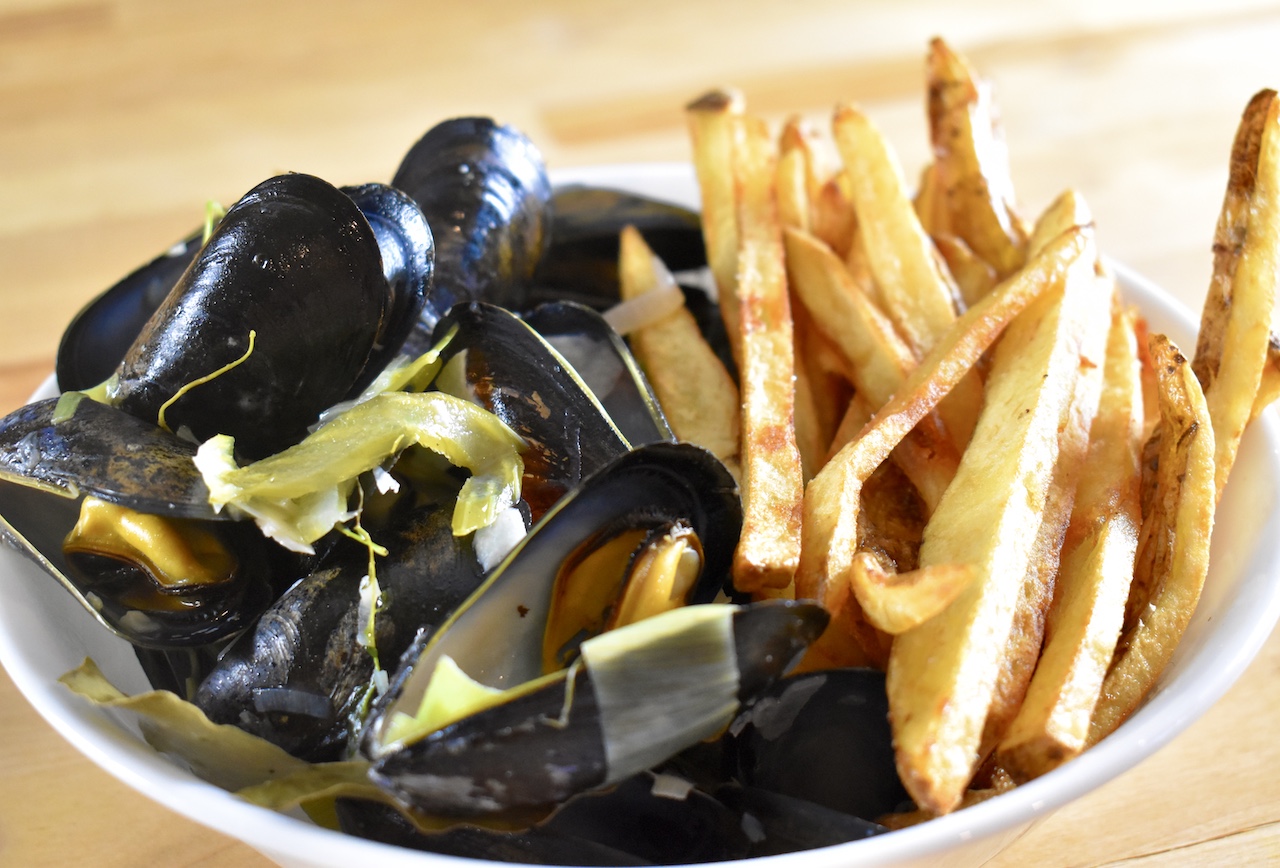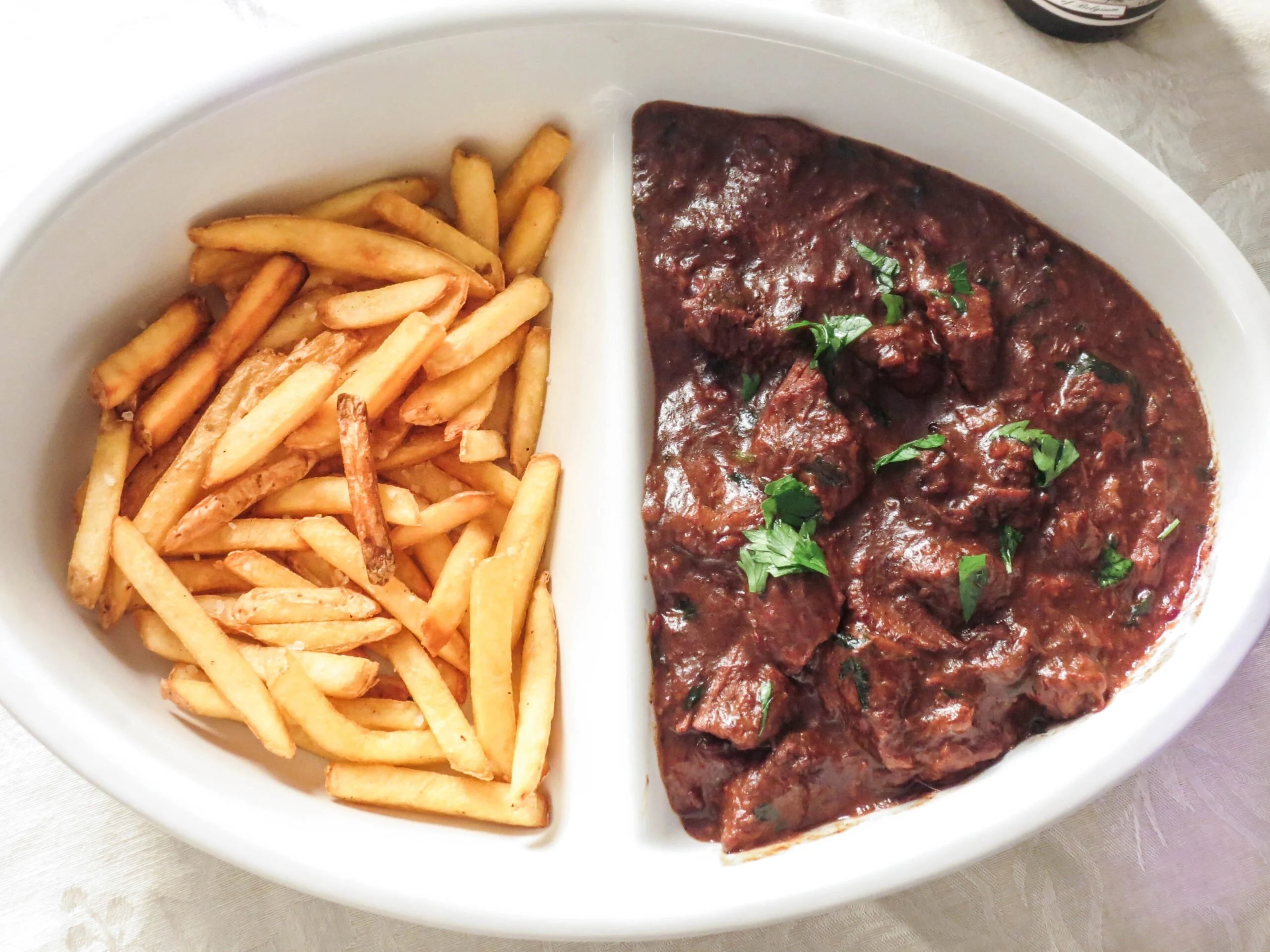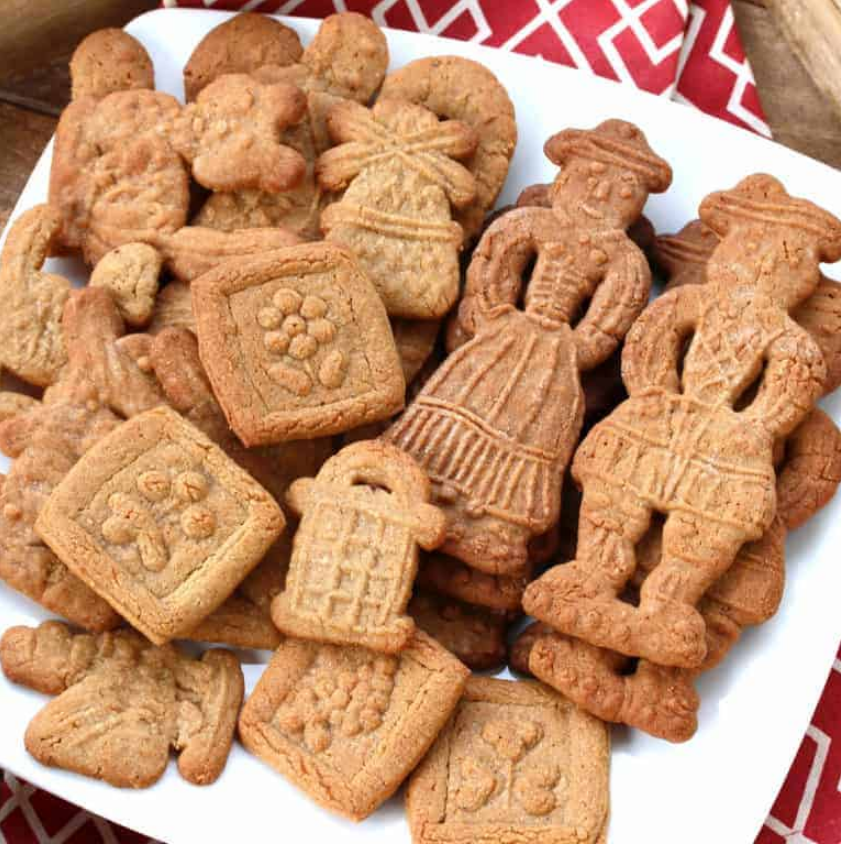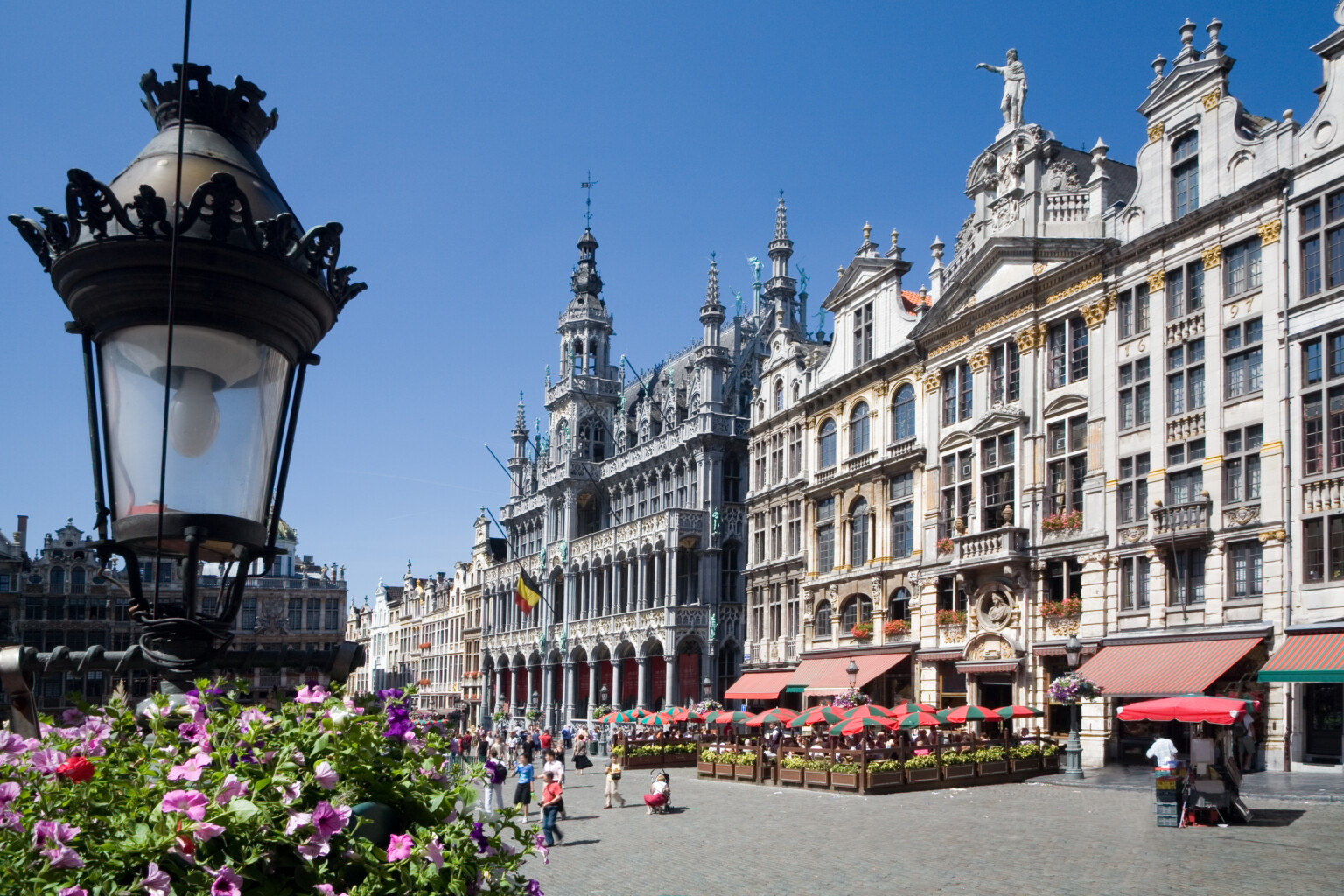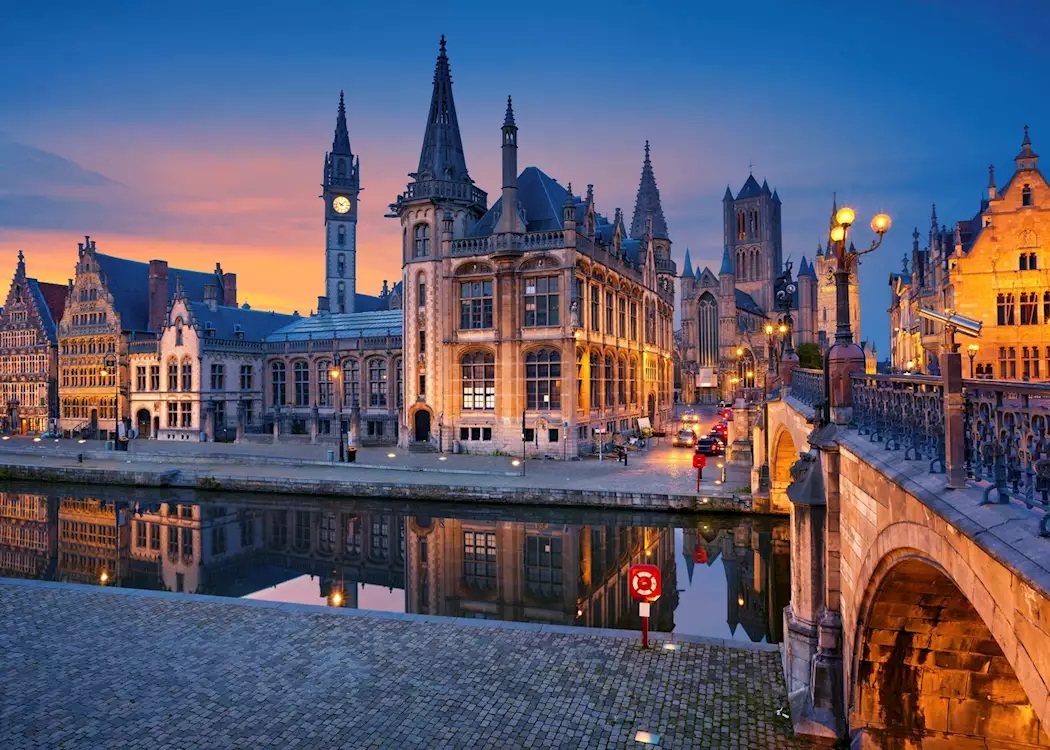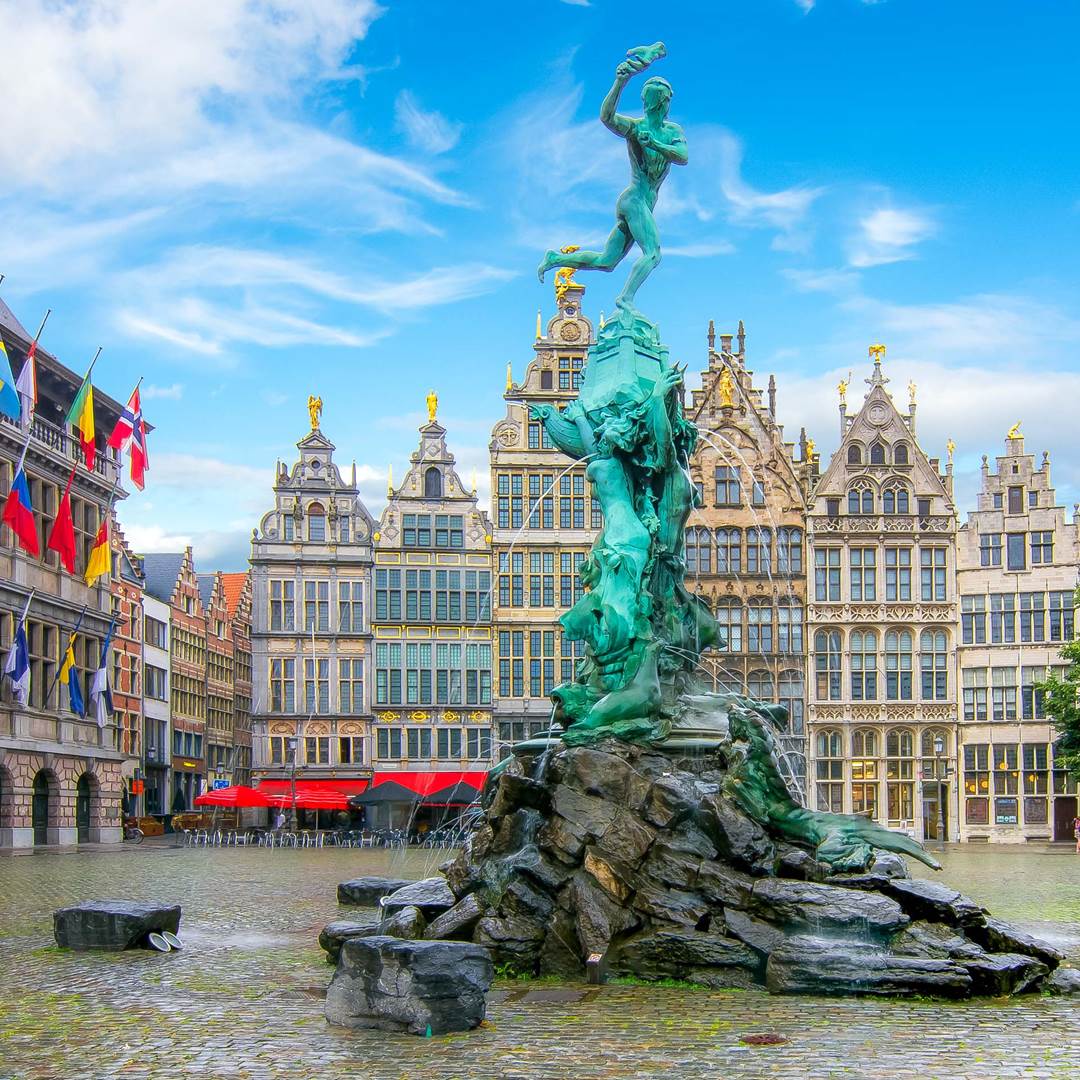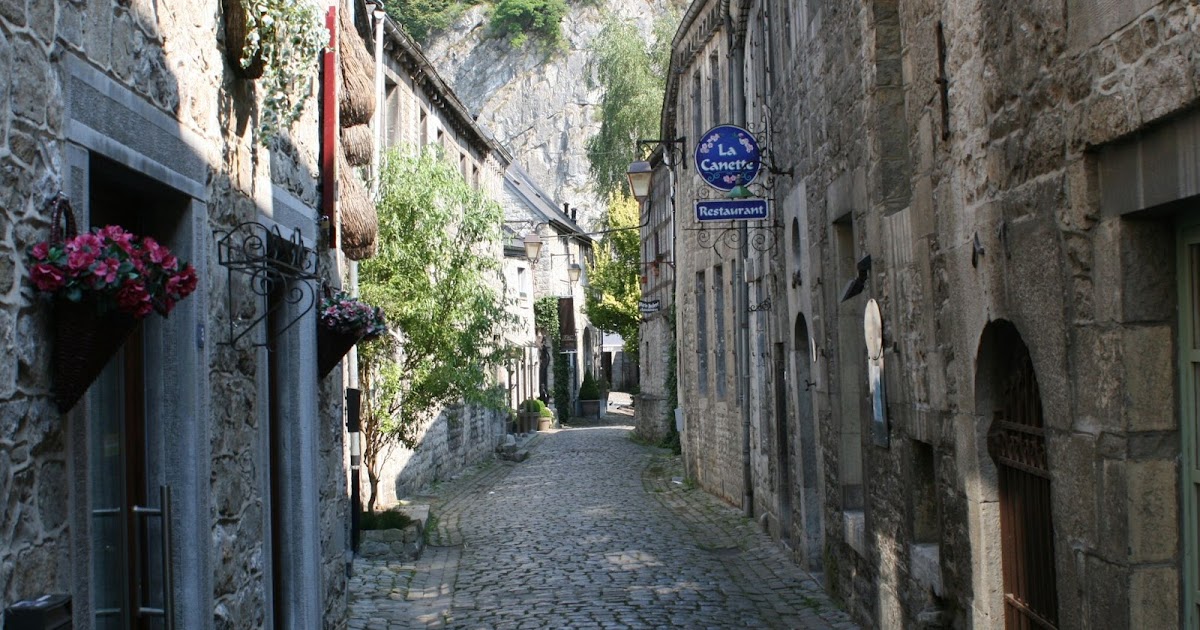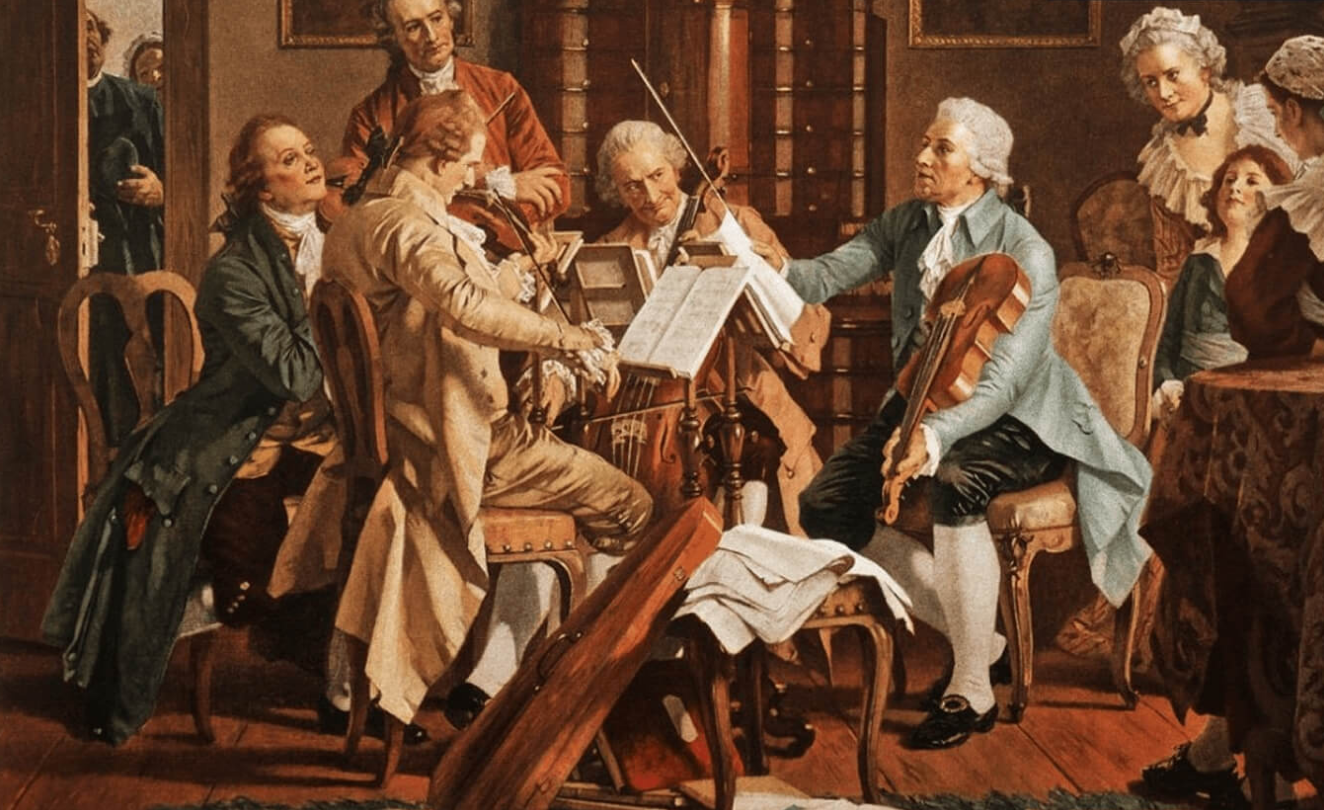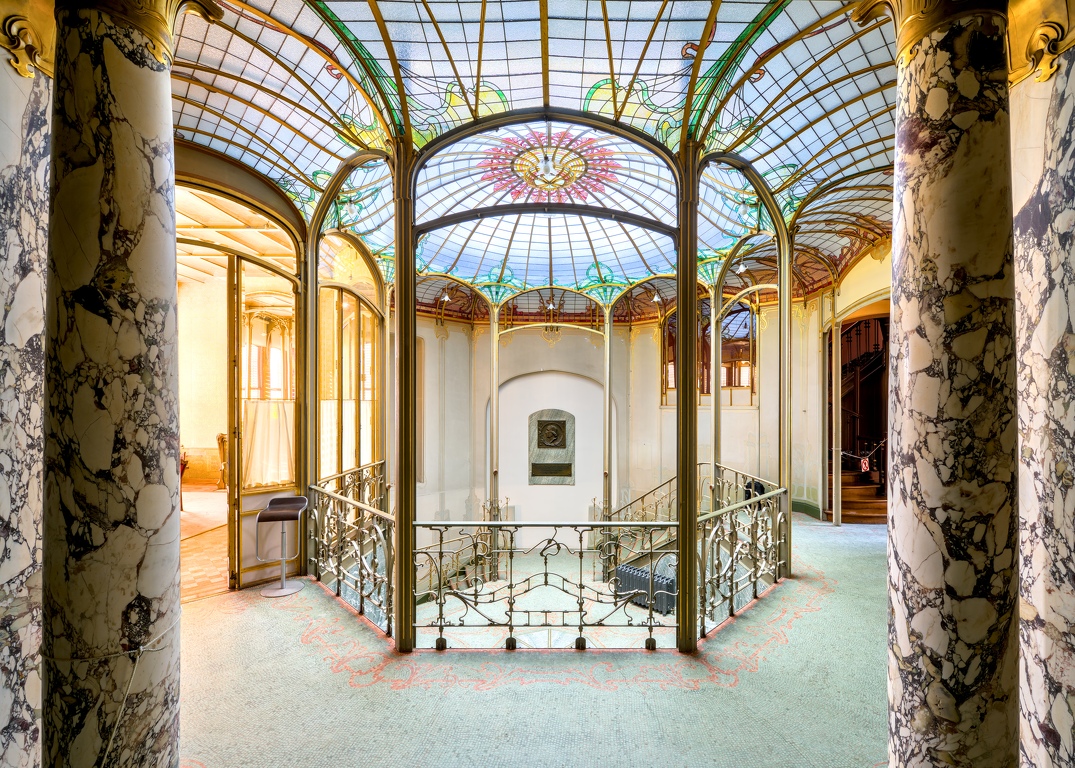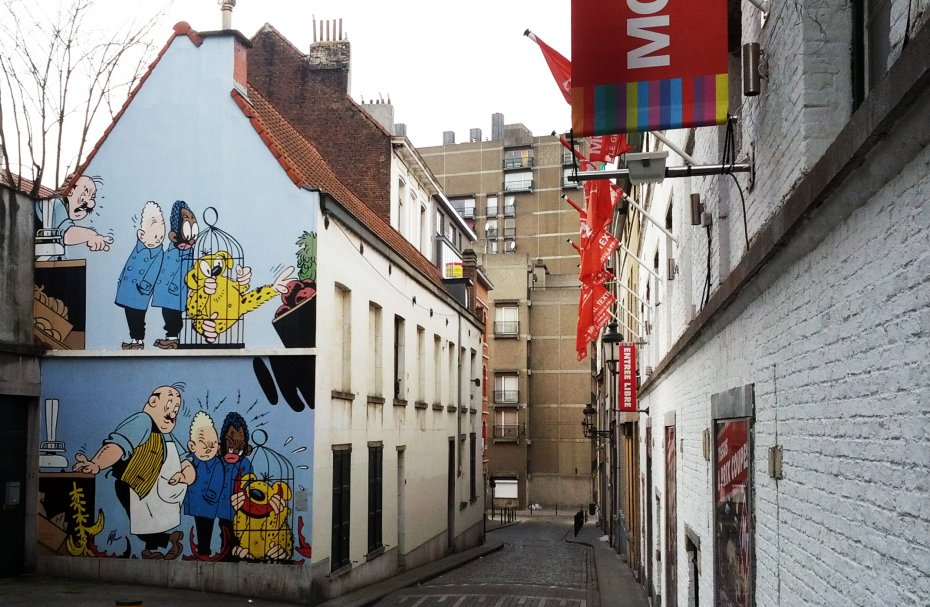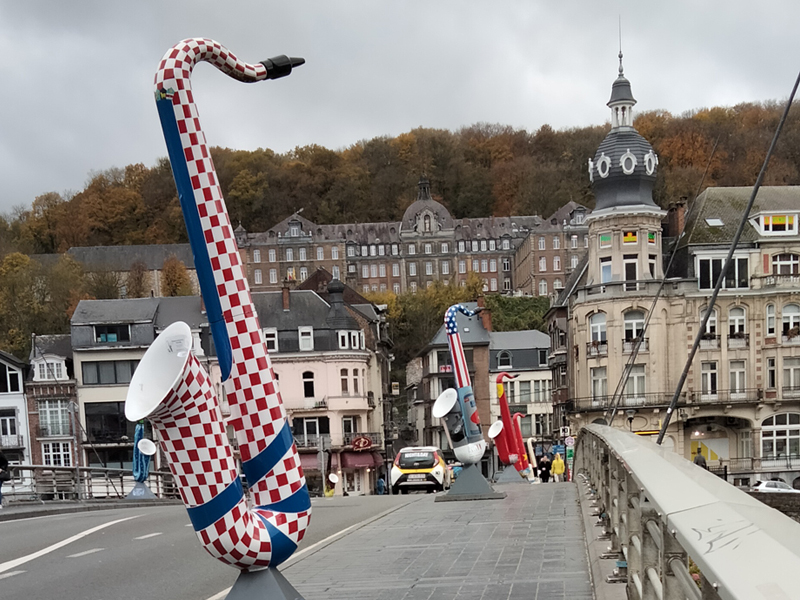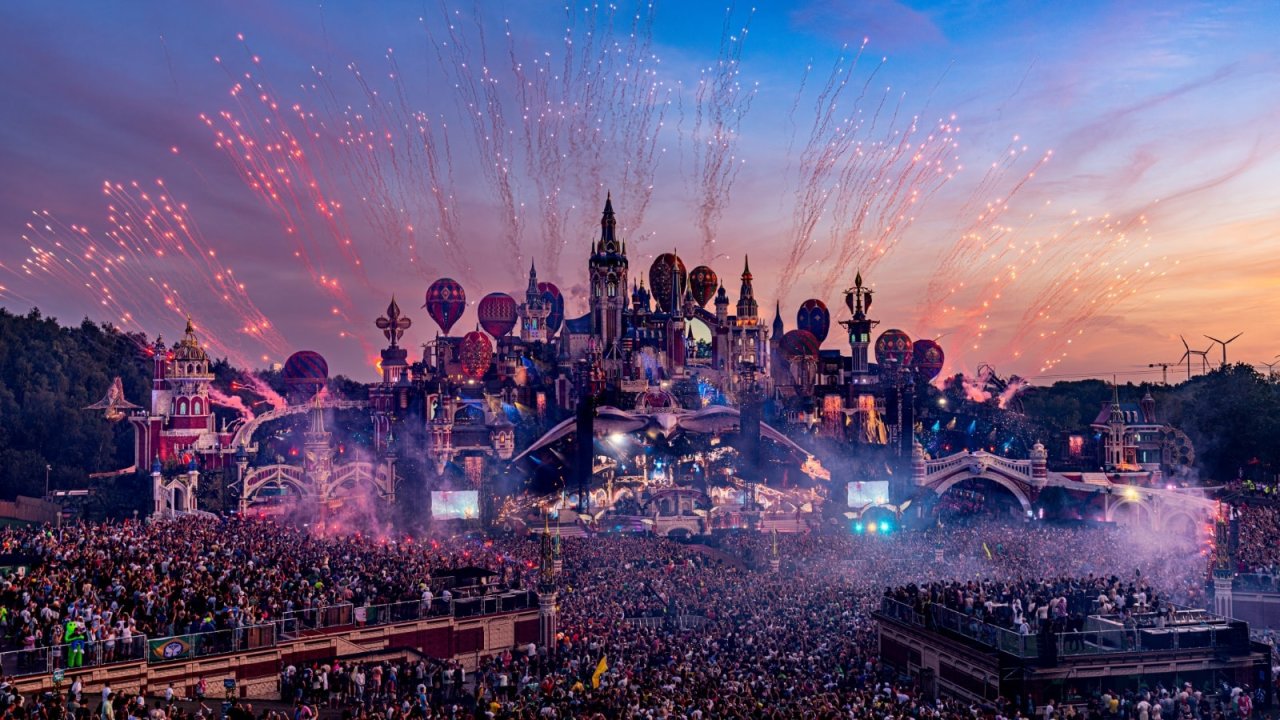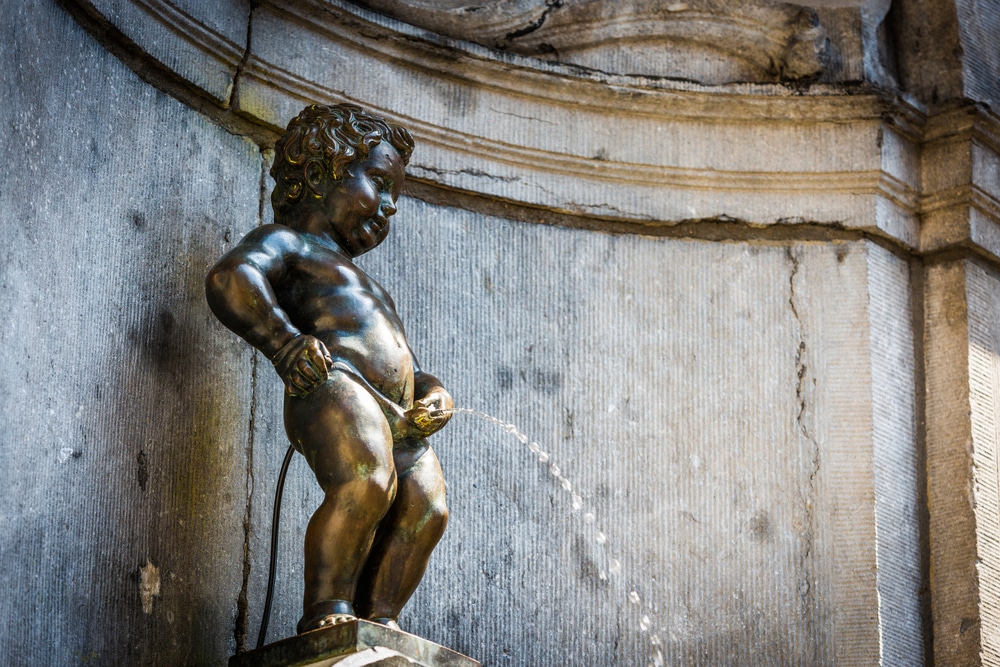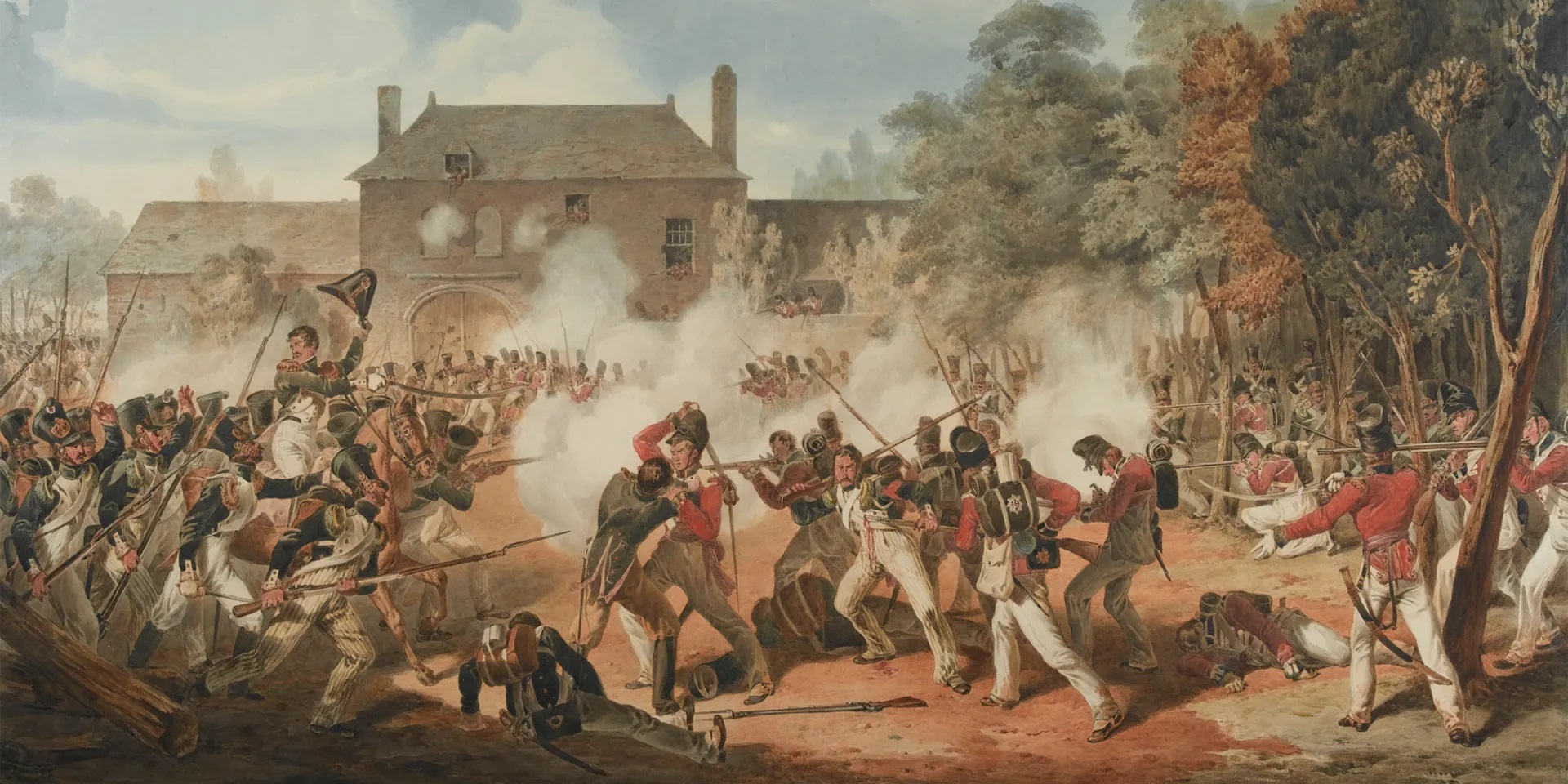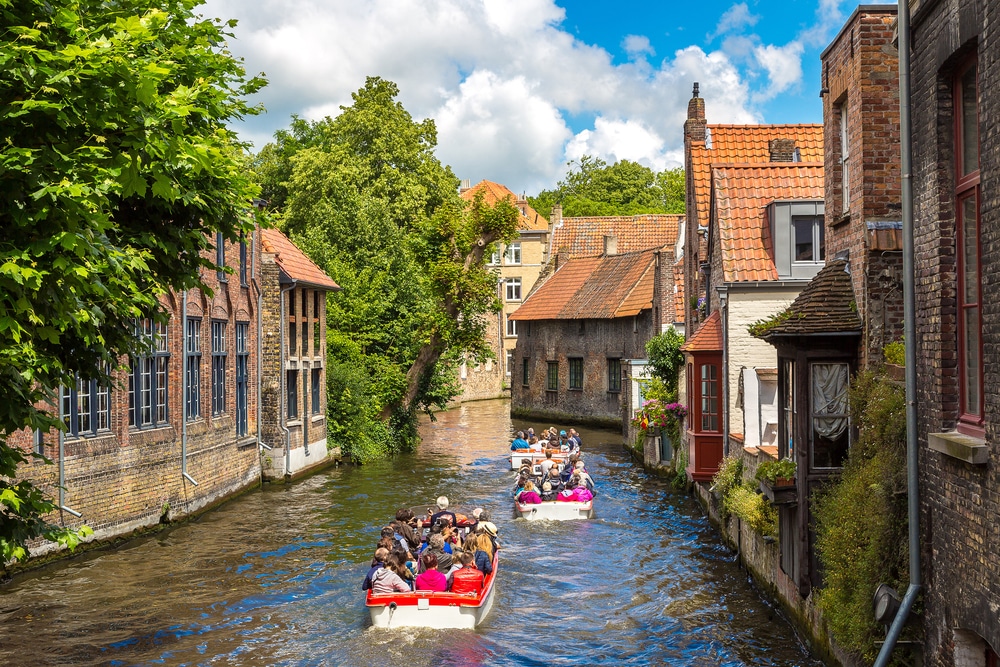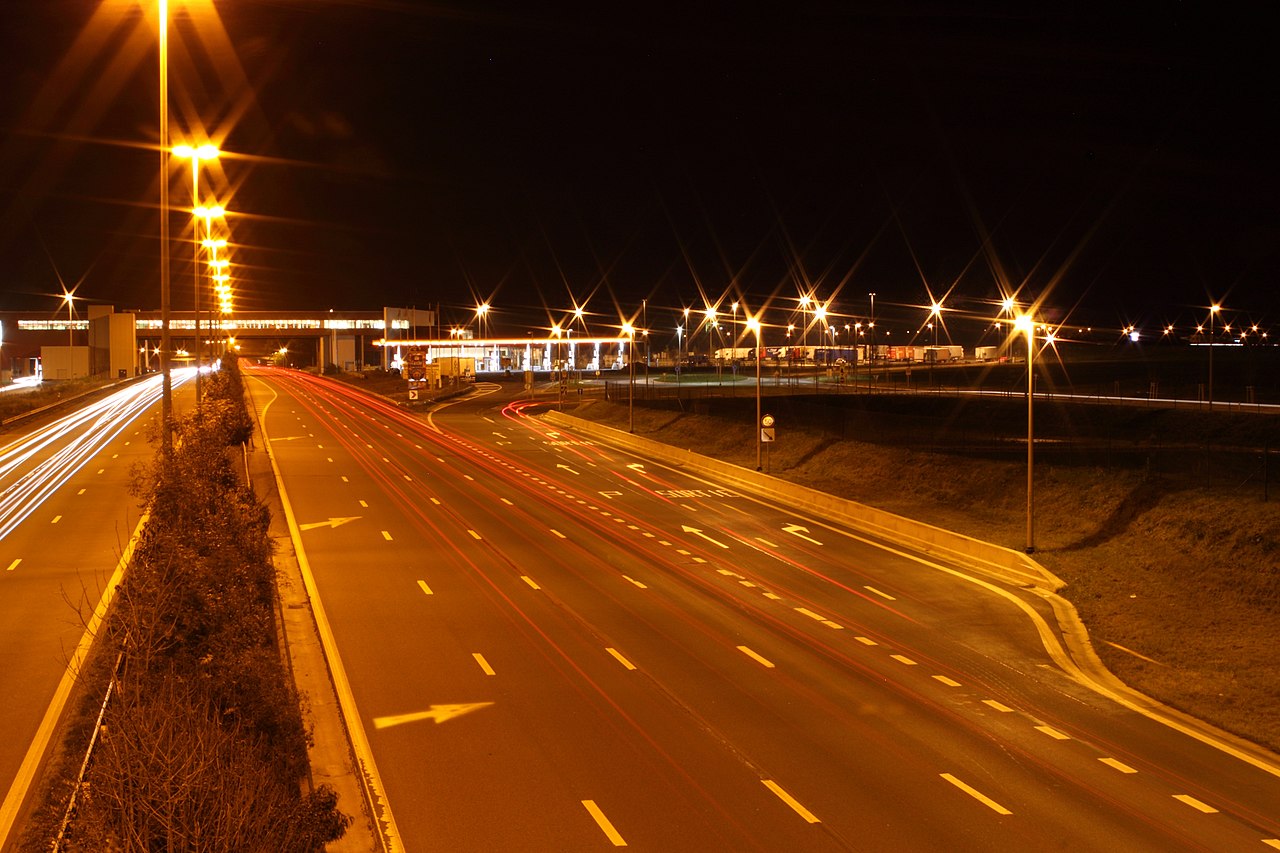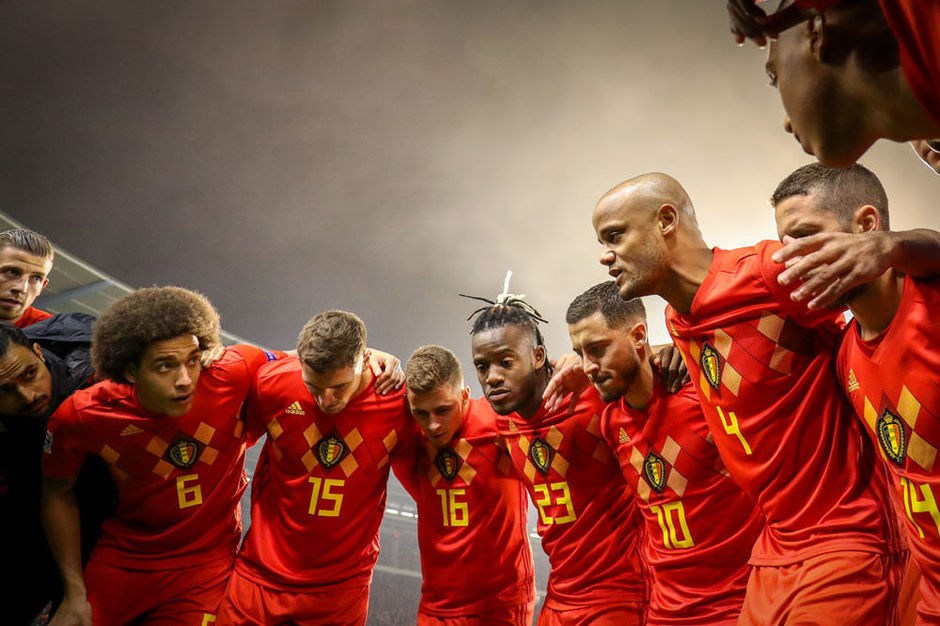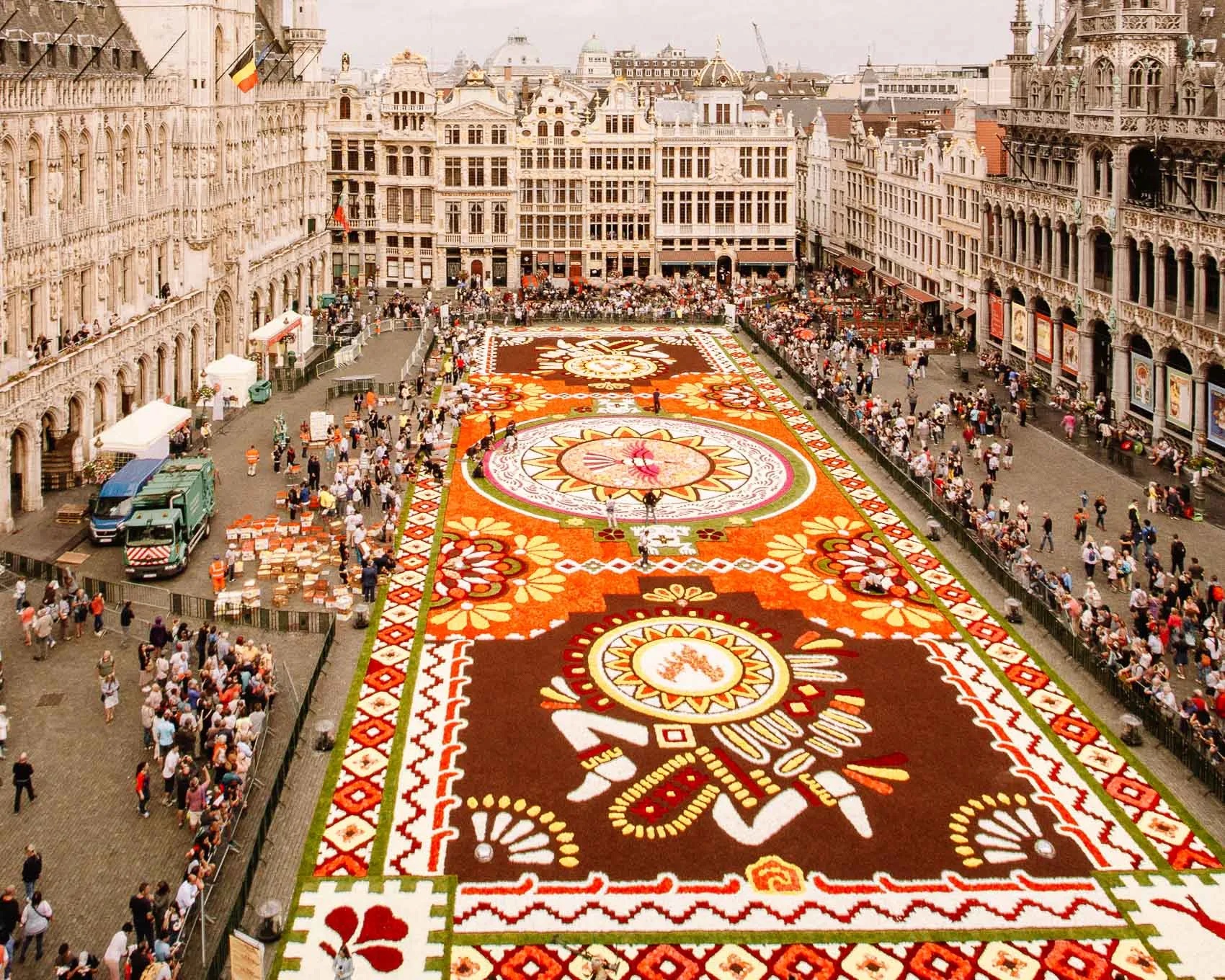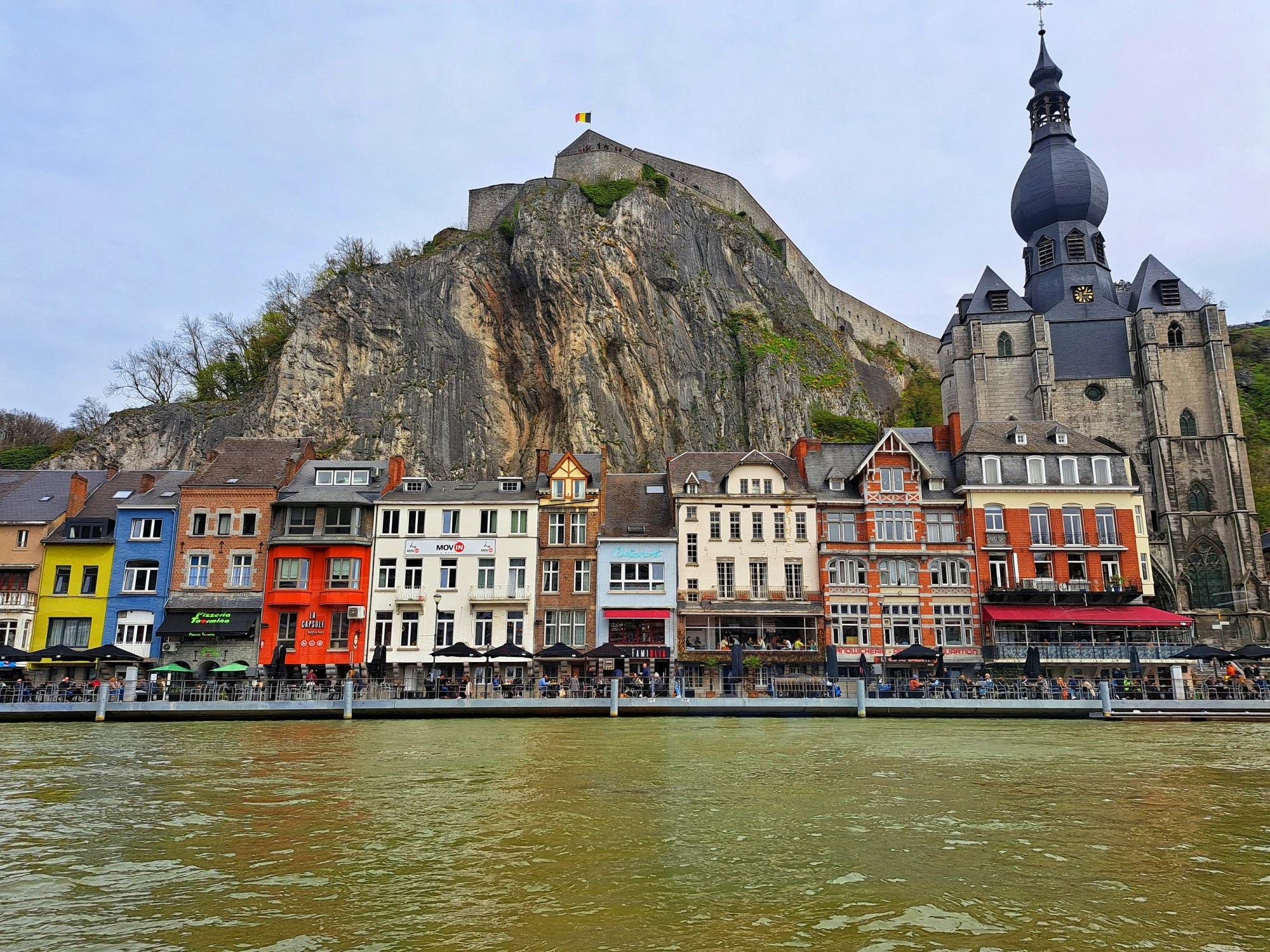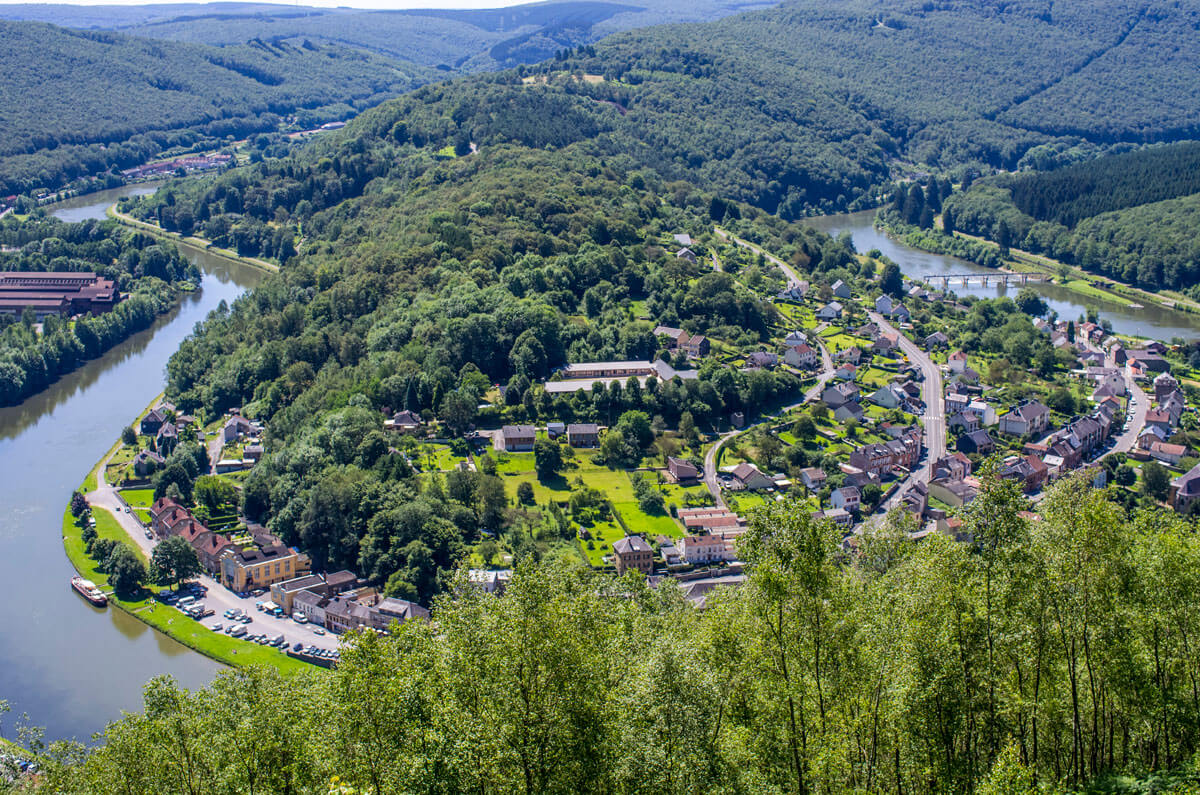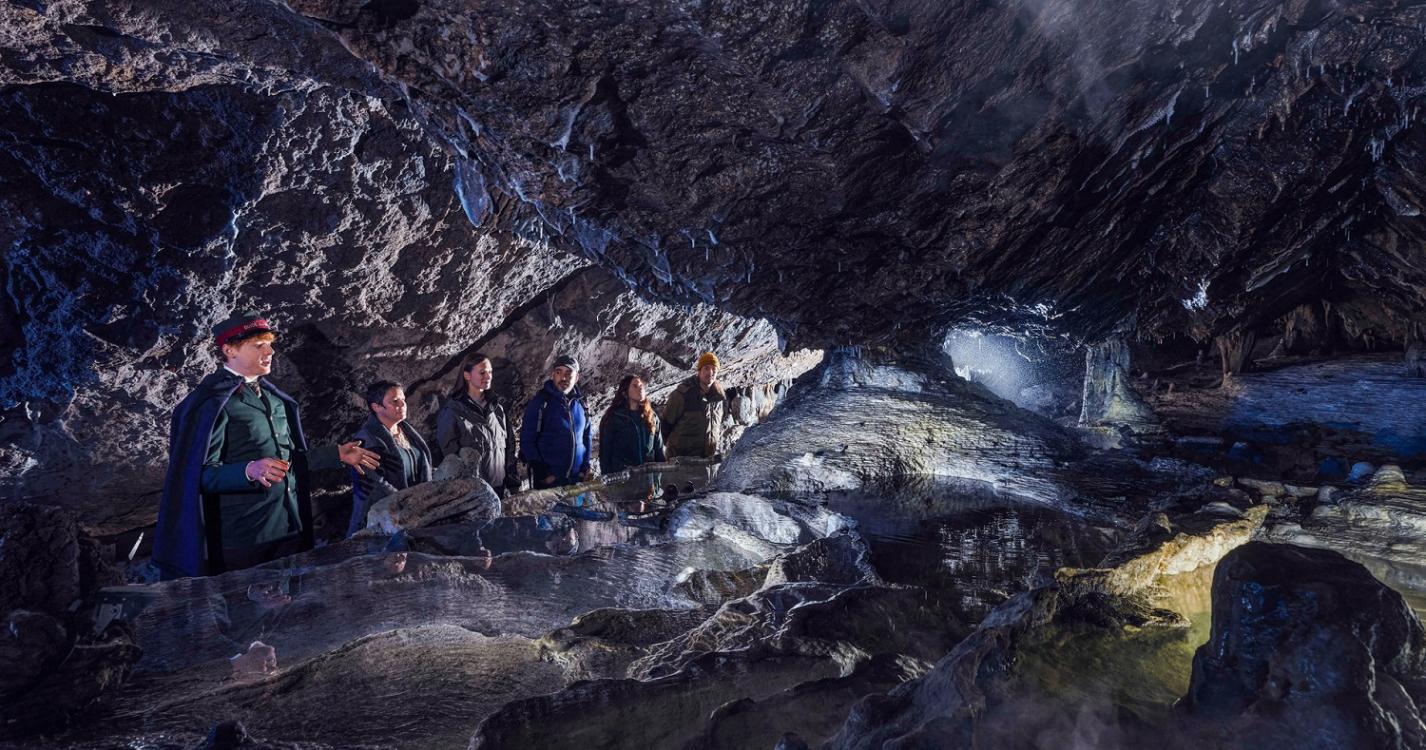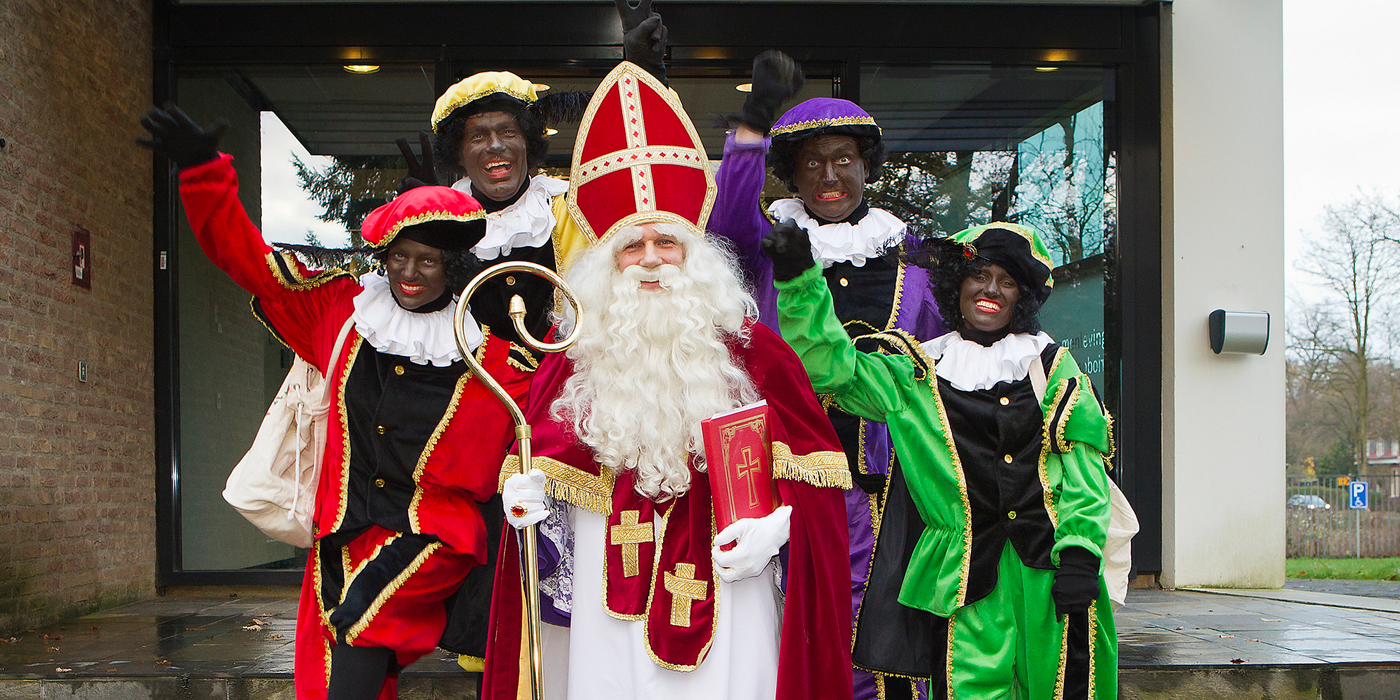What Is Belgium Known For? Top 30 Reasons To Love This Country
What is Belgium known for? From its legendary chocolates to its breathtaking architecture, Belgium is a country that leaves an unforgettable mark on anyone who visits.
Author:Sophia HarperReviewer:Liam JonesDec 04, 202412.6K Shares168.4K Views
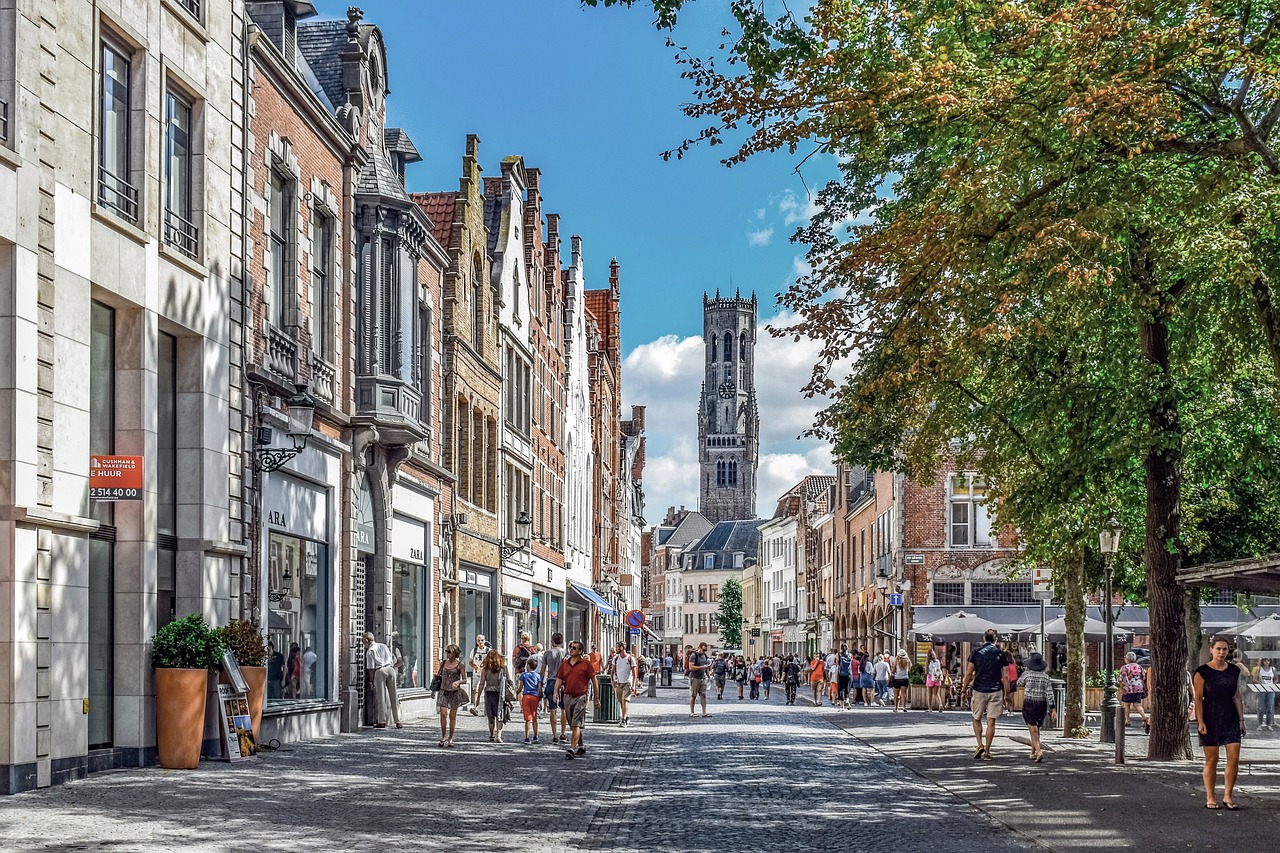
Belgium, a small yet influential country in the heart of Europe, offers a delightful mix of history, culture, and culinary excellence. Despite its size, this nation has left an indelible mark on the world with its artistic heritage, rich gastronomy, and modern innovations. Whether it’s sipping on a Trappist beer, marveling at the canals of Bruges, or enjoying a plate of double-fried fries, Belgium offers an experience that lingers long after the visit ends.
This article uncovers the myriad reasons Belgium is celebrated worldwide, from its renowned chocolates to its quirky traditions. Let’s explore what makes Belgium truly unique.
Culinary Delights Of Belgium
1. Belgian Chocolate: A Global Obsession
Belgium’s reputation for chocolate dates back to the 17th century, but it was in 1912 that Jean Neuhaus revolutionized the industry by inventing the praline. Today, Belgium is synonymous with premium chocolate, with strict quality standards mandating the use of 100% pure cocoa butter.
Must-Try Belgian Chocolate:
- Truffles:Handcrafted with exquisite fillings like ganache, praline, and caramel.
- Pralines:A Belgium invention, filled with smooth, rich chocolate.
- Hot Chocolate:Sipping on thick, rich Belgian hot chocolate in a cozy café is a must!
For the best chocolate experience, visit Brussels' Chocolate Museumor the Chocolaterie Pierre Marcolini.
2. Belgian Beer: A UNESCO Heritage And National Pride
Belgium is home to some of the best beers in the world, with over 1,000 different types brewed across the country. Belgian beer is known for its complexity, flavors, and centuries-old brewing traditions.
Types Of Belgian Beers:
- Trappist Ales:Brewed in monasteries by monks, like Chimayand Westmalle.
- Lambics:Naturally fermented, sour beers such as Cantillonand Boon.
- Saison:A farmhouse ale known for its refreshing taste, with Saison Dupontbeing a classic.
- Abbey Beers:Brewed in the style of Trappist ales, often associated with Belgian monasteries.
- Belgian Witbier (White Beer):A cloudy wheat beer like Hoegaarden, often flavored with coriander and orange peel.
Don’t miss visiting Belgium’s iconic beer caféslike Café Deliriumin Brussels, home to over 2,000 varieties of beer.
3. Waffles: The Sweet Symbol Of Belgium
No visit to Belgium is complete without tasting its iconic waffles, which come in two distinct varieties: Brusselsand Liège. While both are delicious, they offer different experiences.
- Brussels Waffles: These waffles are light, airy, and rectangular, with deep pockets perfect for holding toppings like whipped cream, chocolate sauce, fresh fruit, or even ice cream.
- Liège Waffles: Denser and sweeter, these waffles are made with caramelized pearl sugarthat creates a delightful crunch on the outside, making them perfect for a handheld treat.
Belgian waffles have become so popular that they were introduced to the United Statesat the 1958 World’s Fair in Brussels, where they were dubbed “Belgian waffles.” However, Belgians traditionally serve them as a dessert or snack, not as a breakfast dish.
For an authentic experience, grab a waffle from a local street stallor café, especially in cities like Brussels, Ghent, and Bruges.
4. Belgian Fries (Frites)
Belgium is often credited with the invention of French fries-or, as they are locally known, frites. The Belgians perfected the art of frying potatoes, giving fries their famous crispy exteriorand fluffy interior.
The secret lies in the double frying technique, where the fries are fried once at a lower temperature to cook them through, then again at a higher temperature to achieve the perfect crunch.
Serving and Pairing: Traditionally, fritesare served in a paper conewith a variety of flavorful sauces. The most common accompaniment is mayonnaise, but there are many other regional sauces to choose from, including andalouse(a tangy, creamy sauce) and sauce américaine(a rich, tomato-based sauce).
For the best fries, head to a friterie, the local fry stands that dot the country. It’s a staple of Belgian life and an unmissable culinary experience.
5. Mussels (Moules-Frites)
Mussels with fries, known as moules-frites, is considered Belgium’s national dish. This delightful combination consists of plump, tender mussels served alongside crispy Belgian fries.
The mussels are typically prepared in one of two ways:
- Moules Marinière: The classic preparation, cooked with white wine, garlic, and parsley.
- Moules à la bière: Cooked with a variety of Belgian beers, creating a rich and flavorful broth.
Moules-frites is best enjoyed at a traditional seaside restaurantor a Brussels café, where locals gather to savor this comforting dish. Pairing it with a cold Belgian beer is the perfect way to enhance the experience.
6. Carbonnade Flamande
A hearty and comforting dish, carbonnade flamandeis a Flemish beef stewmade by slow-cooking beef in Belgian beer, along with caramelized onionsand a dash of vinegar for balance. The dish is rich in flavor, with the beer adding depth and complexity to the sauce.
Traditionally served with friesor crusty bread, carbonnade flamandeis the epitome of Belgian comfort food, perfect for colder months or a cozy dinner.
7. Speculoos Cookies
Speculoosare the beloved spiced shortbread cookies that have become a worldwide sensation. Traditionally associated with St. Nicholas Dayon December 6, these cookies are now enjoyed year-round.
Made with a blend of cinnamon, nutmeg, and cloves, speculoos have a distinctive, warming flavor.
Often paired with coffee or crumbled over desserts like cheesecakeor ice cream, speculoos has transcended its origins as a holiday treat. The cookies have even inspired speculoos-flavored spreadsthat are a favorite snack in Belgium and beyond.
Iconic Landmarks And Cities In Belgium
8. Brussels: The Capital Of Europe
Brussels, the heart of Belgium, is a bustling city that balances modernity and history. As the administrative hub of the European Union (EU)and NATO, Brussels holds immense political significance. However, it’s not just about politics-this city is steeped in culture, history, and innovation.
- The Grand Place: A UNESCO World Heritage Site and the city's centerpiece, surrounded by ornate guildhalls, the Town Hall, and the King’s House. Visit during the flower carpet festival(held every two years) to see the square transformed into a vibrant sea of blooms.
- The Atomium: Constructed for the 1958 World’s Fair, this futuristic structure symbolizes scientific progress. Explore its exhibition spheresand enjoy panoramic views from the top sphere.
- Manneken Pis: A quirky bronze statue of a boy urinating, often dressed in themed costumes for holidays and events.
Brussels is also a culinary hotspot, offering world-class chocolate shops, frites stands, and a thriving beer scene.
9. Bruges: The Venice Of The North
Often called the Venice of the North, Bruges is a fairytale city that charms visitors with its medieval canals, cobblestone streets, and Gothic architecture. A walk through Bruges feels like stepping back in time, with its well-preserved historic center and tranquil atmosphere.
Must-See Attractions in Bruges:
- The Belfry Tower: Climb the 366 steps to the top of this medieval tower for breathtaking views of the city.
- The Basilica of the Holy Blood: A Gothic church that houses a relic said to contain the blood of Christ.
- The Beguinages: A serene retreat with whitewashed houses and peaceful gardens once home to a religious women’s community.
- Boat Rides on the Canals: One of the best ways to explore Bruges is from the water. A canal boat touroffers a unique perspective of the city’s picturesque bridges and architecture.
Don’t forget to visit one of Bruges’ many chocolate shopsor indulge in a Belgian waffleat a local café.
10. Ghent
Ghent combines historic charmwith a lively university culture, making it one of Belgium’s most dynamic cities. Often overshadowed by Bruges, Ghent offers a less touristy but equally captivating experience.
Key Attractions in Ghent:
- Gravensteen Castle: A medieval fortress complete with ramparts and a torture museum. The castle offers stunning views of the city from its walls.
- Graslei and Korenlei: These harbors, lined with historic guildhalls, are perfect for a leisurely stroll or riverside dining.
- St. Bavo’s Cathedral: Home to the Ghent Altarpiece, also known as the "Adoration of the Mystic Lamb," one of the most significant works of art in Western history.
Ghent also boasts a vibrant cultural scene, with festivals, live music, and a thriving craft beer community.
11. Antwerp: The Diamond Capital
Known as the Diamond Capital of the World, Antwerp handles 80% of the world’s uncut diamonds, making it a global hub for the gem trade. The city also boasts a rich artistic legacy as the home of Peter Paul Rubens, one of Europe’s most celebrated painters.
What to Do in Antwerp:
- Diamond District: Explore the bustling streets where diamonds are traded and learn about the trade’s history at the DIVA Museum.
- Cathedral of Our Lady: A magnificent Gothic cathedral housing works by Rubens, including "The Elevation of the Cross."
- Meir Shopping District: Shop for luxury goods and visit Rubens’ House for a glimpse into the artist’s life.
Antwerp’s mix of historic landmarks, modern design, and cosmopolitan energy makes it a favorite among travelers.
12. Durbuy: The World’s Smallest City
Durbuy, with its population of just 500, proudly claims the title of "the smallest city in the world." Nestled in the Ardennes region, this quaint town offers medieval charm, picturesque landscapes, and a peaceful escape from the hustle and bustle of larger cities.
Things to Do in Durbuy:
- Explore the Old Town: Wander through its narrow cobblestone streets, lined with stone houses and cozy cafés.
- Adventure Activities: The surrounding Ardennes offer opportunities for kayaking, hiking, and cycling.
- Topiary Park: Visit this unique garden featuring over 250 meticulously sculpted shrubs.
Durbuy is the perfect destination for travelers seeking a relaxing getawaywith a touch of history and nature.
Belgium’s Unique Contributions To Art And Culture
13. Flemish Painters
Belgium has been home to some of the greatest artists in history, with names like Peter Paul Rubens, Jan van Eyck, and René Magrittedefining entire artistic movements.
- Peter Paul Rubens: Known for his dramatic Baroque masterpieces, Rubens’ works are celebrated for their dynamic compositions and vivid colors. Visit the Rubens House in Antwerpto see where the artist lived and created many of his iconic works.
- Jan van Eyck: A pioneer of Northern Renaissance art, van Eyck’s attention to detail and innovative use of oil paint are epitomized in his masterpiece, the Ghent Altarpiece(Adoration of the Mystic Lamb), located in St. Bavo’s Cathedralin Ghent.
- René Magritte: As one of the leading figures of Surrealism, Magritte’s thought-provoking works challenge perceptions of reality. The Magritte Museum in Brusselshouses an extensive collection of his art, offering visitors a glimpse into his surreal world.
Art Lover's Tip: Don't miss the Royal Museum of Fine Artsin Antwerp, which houses an impressive collection of Flemish art, or the Musées Royaux des Beaux-Artsin Brussels for a journey through Belgian art history.
14. Gothic And Art Nouveau Architecture
Belgium’s architectural heritage is as diverse as its art, blending Gothic grandeurwith Art Nouveau eleganceto create a unique urban landscape.
Gothic Marvels:
- St. Bavo’s Cathedral(Ghent): A masterpiece of Gothic architecture, it is home to the Ghent Altarpiece, one of the most significant works of European art.
- The Grand Place(Brussels): With its ornate facadesand elaborate Gothic design, it’s one of the most stunning squares in Europe.
- The Belfry of Bruges: This medieval tower is both an architectural gem and a symbol of civic pride.
Art Nouveau Highlights:
- Victor Horta's Buildings: Victor Horta, a pioneer of Art Nouveau, left a lasting legacy in Brussels with masterpieces like the Horta Museumand Hotel Tassel.
- Old England Building: This former department store in Brussels, now home to the Musical Instruments Museum, is another Art Nouveau icon.
Architectural Tip: Take an Art Nouveau walking tourin Brussels or explore Bruges and Ghent for a mix of medieval and Gothic charm.
15. Comic Strip Artistry
Belgium is a global leader in comic art, boasting over 800 registered comic series. The country has given birth to beloved characters like Tintin, The Smurfs, and Lucky Luke, making comic strips an integral part of its cultural identity.
Must-Visit Comic Highlights:
- Comic Strip Route(Brussels): A walking tour featuring over 50 colorful murals of iconic comic characters adorning the city’s walls.
- Belgian Comic Strip Center(Brussels): This museum delves into the history of Belgian comics, showcasing original artwork, character development, and the global impact of the medium.
Fun Fact: Tintin’s creator, Hergé, is so revered in Belgium that there’s an entire museum dedicated to his work—the Hergé Museumin Louvain-la-Neuve.
16. The Saxophone
The saxophone, one of the world’s most iconic musical instruments, was invented by Belgian Adolphe Saxin 1846. Born in the town of Dinant, Sax transformed the world of music by creating an instrument that bridged the gap between brass and woodwinds.
How to Celebrate the Saxophone:
- Visit Dinant, where Sax’s legacy is celebrated with monuments, museums, and even saxophone-shaped streetlights.
- Explore the Adolphe Sax House, a museum dedicated to his life and inventions.
- Attend one of Dinant’s music festivals, where the saxophone takes center stage.
Musical Tip: Stroll along Dinant’s picturesque riverside while admiring the colorful, larger-than-life saxophone sculptures dotting the town.
17. Music Festivals And Parades
Belgium is renowned for its vibrant festivals, ranging from world-famous music events to traditional parades that highlight its rich cultural diversity.
Top Music Festivals:
- Tomorrowland: Tomorrowlandheld in Boom, this electronic music festivalattracts thousands of fans from around the globe and is considered one of the best festivals in the world.
- Rock Werchter: A multi-genre festival showcasing rock, pop, and indie legends.
- Pukkelpop: Known for its eclectic lineup, blending big-name acts with underground artists.
Traditional Parades and Events:
- Carnival of Binche: A UNESCO-recognized event where Gilles performersdon elaborate costumes and throw oranges into the crowd as part of an age-old tradition.
- Procession of the Holy Blood(Bruges): A religious parade featuring a relic of Christ’s blood, carried through the streets of Bruges every spring.
- Gentse Feesten(Ghent): A ten-day festival featuring live music, street performances, and cultural activities.
Festival Tip: Plan your visit during summer to catch some of these iconic music festivals, or head to Bincheduring February to experience one of Belgium’s most unique traditions.
Quirky And Fun Highlights Of Belgium
18. Manneken Pis
This bronze statue of a little boy urinating has become a symbol of Brussels’ quirky charm. The statue often dons elaborate costumes, and visitors can learn about its extensive wardrobe at the GardeRobe MannekenPis Museum. Complementary statues, Jeanneke Pis (a peeing girl) and Het Zinneke (a peeing dog), add to the whimsy.
19. The Battle Of Waterloo
This pivotal 1815 battle, which marked Napoleon Bonaparte’s final defeat, took place near Brussels. Today, visitors can explore the battlefield, its monuments, and the Wellington Museum to learn about this historic event.
20. Belgian Canals
While the Netherlands is renowned for its canals, Belgium’s waterways possess their own unique charm and allure. Bruges, often called the "Venice of the North," boasts a network of picturesque canals that weave through the city, offering a romantic and serene window into its medieval past.
Once a bustling trade hub, Bruges’ canals today reflect its rich history and timeless beauty, inviting visitors to explore the city’s stunning architecture and cultural heritage from a truly enchanting perspective.
21. Lit Highways
Belgium is one of the few countries in the world with illuminated highways. This unique feature ensures visibility and safety, although recent energy-saving measures have reduced nighttime lighting.
22. Multilingual Signs And City Names
Belgium’s three official languages—Dutch, French, and German—make for an interesting challenge for travelers. Many cities have multiple names: Ghent (Gent/Gand), Antwerp (Antwerpen/Anvers), and so on. This linguistic diversity reflects Belgium’s multicultural identity.
23. Record For Longest Time Without A Government
Belgium holds the record for the longest period without a federal government—652 days! Despite this, the country continued to function smoothly, demonstrating its resilience.
24. The “Red Devils” Football Team
Belgium’s national football team, famously known as the Red Devils, serves as a unifying force for the nation, particularly during major international tournaments. Their electrifying performances and remarkable achievements on the global stage have elevated them to a symbol of national pride and inspiration.
The team's journey, characterized by skill, determination, and unity, resonates deeply with fans, bringing together Belgians from all walks of life to cheer for a shared dream of success.
25. Flower Carpets In Brussels
Every two years, the Grand Place in Brussels undergoes a breathtaking transformation into a vibrant flower carpet, an event that captivates both locals and tourists alike. Spanning over 1,800 square meters, this masterpiece is crafted entirely from begonias, arranged into intricate patterns inspired by themes ranging from cultural heritage to nature.
This stunning display not only highlights Belgium's artistic and horticultural expertise but also attracts thousands of visitors, making it one of the country's most cherished and visually striking traditions.
Hidden Gems Of Belgium
26. Dinant
Nestled along the Meuse River, Dinant is known for its dramatic cliffs, historic citadel, and Adolphe Sax’s legacy. It’s a perfect destination for both history buffs and music lovers.
27. The Ardennes Region
This lush, forested region in southern Belgium is ideal for outdoor enthusiasts. Activities like hiking, kayaking, and exploring WWII battle sites make it a favorite getaway.
28. The Caves Of Han
Located in the Ardennes, these underground caverns are among Belgium’s most spectacular natural wonders. Visitors can take guided tours to marvel at the stalactites and underground rivers.
Fun Facts About Belgium
29. Belgium’s Contribution To The Internet
Belgian scientist Robert Cailliaucollaborated with Tim Berners-Lee in the late 1980s to co-invent the World Wide Web, an innovation that revolutionized global communication and information sharing.
While Berners-Lee proposed the hypertext system, Cailliau worked on its implementation, advocating for the web's development and usability.
Belgium’s impact on the digital world doesn’t stop there—Brussels is also home to the European Network and Information Security Agency (ENISA), further solidifying its place in the technological sphere.
Fun Fact: The first-ever website, created in 1991, can still be visited at info.cern.ch, and it highlights the work of Cailliau and Berners-Lee.
30. Sinterklaas Tradition
In Belgium, the Sinterklaas traditionis a cherished event that predates the modern Santa Claus. Celebrated on December 6th, St. Nicholas Day is eagerly awaited by children across the country. According to tradition, Sinterklaas arrives by boat from Spain, accompanied by his helper, Zwarte Piet (Black Peter).
Children leave their shoes by the fireplace the night before, often with a carrot or sugar cubes for Sinterklaas’s white horse. In return, they wake up to find small gifts, chocolates, and speculoos cookiesin their shoes—if they’ve been good. Naughty children, however, are said to receive a piece of coal.
While Santa Claus has become more prominent in modern times, Sinterklaas remains a deeply rooted tradition in Belgian culture, celebrated with parades, school visits, and plenty of festive cheer.
How To Experience Belgium Like A Local
- TravelTips:Explore Belgium’s efficient train network or cycle through its bike-friendly cities.
- Dining Culture:Embrace slow dining, and savor multi-course meals without rushing.
- Seasonal Highlights:Visit during summer for festivals or winter for enchanting Christmas markets.
FAQs About Belgium
What Is Belgium’s Most Iconic Food?
Chocolate, waffles, fries, and mussels are quintessential Belgian staples.
What Are Belgium’s Hidden Gems?
Dinant, Durbuy, Mechelen, and the Ardennes offer off-the-beaten-path experiences.
Is Belgium Family-friendly For Travelers?
Yes! Attractions like Plopsaland and Mini-Europe are perfect for families.
Is Belgium Expensive?
Moderately so, but budget-friendly options like street food and free landmarks help.
Conclusion
Belgium may be small, but its cultural and historical influence is immense. From its culinary delights to its artistic contributions and natural wonders, this vibrant country offers something for everyone. Whether you’re strolling through the canals of Bruges, enjoying a Trappist beer, or exploring the caves of Han, Belgium promises an unforgettable journey.

Sophia Harper
Author
Sophia Harper’s photography acts as a portal to the soul of the places she visits. Drawn to South America’s landscapes and cultures, she has spent years capturing everything from the majesty of ancient ruins to the vibrancy of urban streets.
Sophia’s work isn’t just about documenting moments; it’s about evoking the emotions and stories behind them. A dedicated photographer, she has worked with local communities across South America to capture their rich cultural narratives through her lens.

Liam Jones
Reviewer
Liam Jones has made it his mission to prove that adventure doesn’t need a hefty budget. Having traveled to over 40 countries, he specializes in finding affordable ways to experience the world, from the best street food in Bangkok to hidden gems in Lisbon.
Liam’s travel tips have reached thousands of readers, empowering them to see the world on a shoestring budget without sacrificing quality. With a deep passion for local cultures, he continues to share his travel hacks, ensuring adventure remains accessible to all.
Latest Articles
Popular Articles
